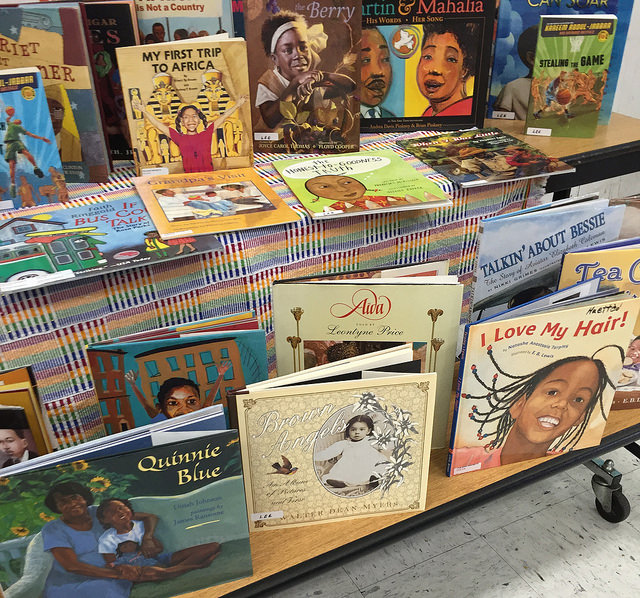 In addition to selecting books that reflect the criteria of the Guide for Selecting Anti-Bias Children’s Books, consider the balance of books in your library or classroom as a whole. All books should portray people who are real and distinctive without stereotyping or tokenism. Find books that represent groups who are often invisible. Look for titles that have well-told, engaging stories relating to the children in your age group or classroom. The authors and illustrators of every book should demonstrate expert knowledge of the culture in the story, either as members of that group or because of real experience and study.
In addition to selecting books that reflect the criteria of the Guide for Selecting Anti-Bias Children’s Books, consider the balance of books in your library or classroom as a whole. All books should portray people who are real and distinctive without stereotyping or tokenism. Find books that represent groups who are often invisible. Look for titles that have well-told, engaging stories relating to the children in your age group or classroom. The authors and illustrators of every book should demonstrate expert knowledge of the culture in the story, either as members of that group or because of real experience and study.
For accurate, authentic diversity with anti-bias values, a library or classroom must provide a combination of books that reflects the children, families, and communities of the program. Additional titles should depict diversity in the USA (and in the world, as children get older). An anti-bias library maintains a balance of books that portray:
- A variety of ways of life. A range of families are depicted: urban, suburban, rural, with or without financial resources, and with women and men in a wide range of roles
- A wide range of family structures in stories that engage young children
- Blue-collar workers, farmers, service workers, and artists as well as professionals and white-collar workers
- Differently-abled and able-bodied people actively taking initiative and filling a range of jobs and roles in the family
- Diversity of looks, work, family, and way of life within all racial and/or ethnic groups
- Able and differently-abled children from all racial/ethnic groups, genders, and classes as active participants in the stories
- Real people from all kinds of backgrounds—children and adults—engaged in actions for change, reflecting current lives as well as lives from the past. Past lives should include everyday people, not just famous individuals.
Please see our recommended booklists by topic for all age groups.